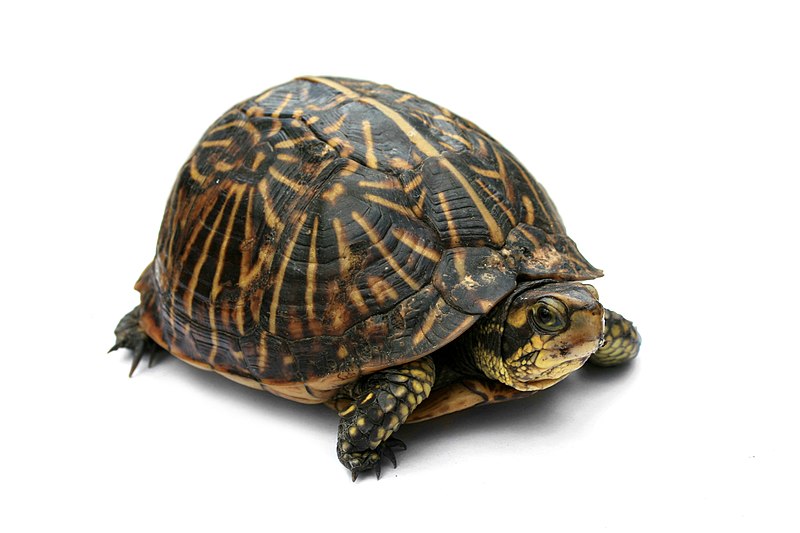 Three of the 4 species in the genus Terrapene – the Eastern, Three-Toed and Ornate Box Turtles – as well as several of the 10 subspecies, have long been popular in the pet trade. However, they should not be classified as “beginner’s turtles”…in fact, their dietary and other requirements are quite strict, and most captives die long before their time. Today I’ll discuss feeding, and will focus on other aspects of their care in future articles.
Three of the 4 species in the genus Terrapene – the Eastern, Three-Toed and Ornate Box Turtles – as well as several of the 10 subspecies, have long been popular in the pet trade. However, they should not be classified as “beginner’s turtles”…in fact, their dietary and other requirements are quite strict, and most captives die long before their time. Today I’ll discuss feeding, and will focus on other aspects of their care in future articles.
Note: Box Turtle populations everywhere have declined drastically due to habitat loss and over-collection, and they are now legally protected in most states. Please be sure to determine that box turtles offered for sale have been captive bred, and are legal to keep in your state.
General Considerations
The first step in providing a proper diet is to accurately identify the species and subspecies that you are dealing with (please see article below). The following recommendations will prove useful for most of the commonly-kept types, but please write in for specific info, as certain subspecies have unique requirements (this applies to temperature and other care aspects as well). Read More »
 That Reptile Blog – Reptile, Amphibian and Exotic Pet Care and Information
That Reptile Blog – Reptile, Amphibian and Exotic Pet Care and Information

 Live mealworms, waxworms or earthworms mixed into canned or pelleted food should encourage your turtle to take a bite. Earthworms are a box turtle favorite and a highly nutritious food in their own right…they can comprise 25% or so of the diet. An occasional pre-killed pink mouse is usually a great hit with box turtles, but is not a necessity.
Live mealworms, waxworms or earthworms mixed into canned or pelleted food should encourage your turtle to take a bite. Earthworms are a box turtle favorite and a highly nutritious food in their own right…they can comprise 25% or so of the diet. An occasional pre-killed pink mouse is usually a great hit with box turtles, but is not a necessity.